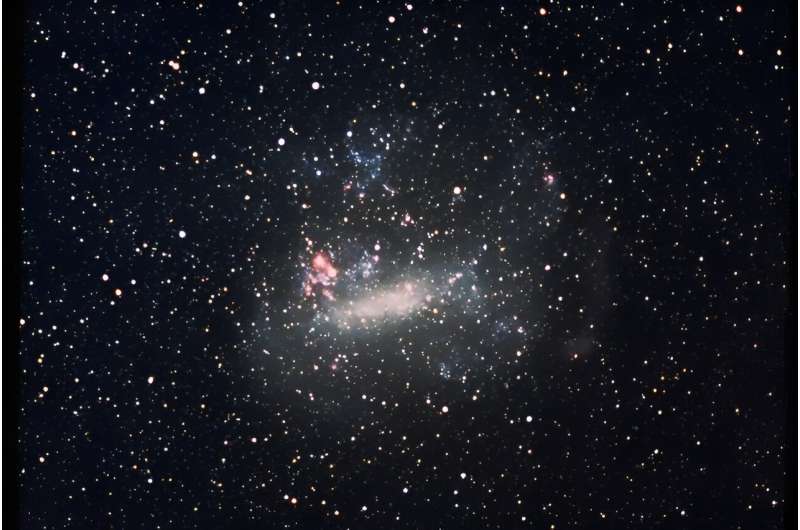This article has been reviewed according to Science X's editorial process and policies. Editors have highlighted the following attributes while ensuring the content's credibility:
fact-checked
preprint
trusted source
proofread
Does the Milky Way have too many satellite galaxies?

The Large and Small Magellanic Clouds are well-known satellite galaxies of the Milky Way, but there are more. It is surrounded by at least 61 within 1.4 million light years (for context the Andromeda galaxy is 2.5 million light years away) but there are likely to be more.
A team of astronomers has been hunting for more companions using the Subaru telescope and so far, have searched just 3% of the sky. To everyone's surprise, they have found nine previously undiscovered satellite galaxies, far more than expected.
Data from Gaia, the satellite collecting accurate position information of astronomical objects, suggests that most of the satellite galaxies orbiting our own are newcomers. Even the Large and Small Magellanic Clouds are now known to be newcomers. Whether any of these will fall into orbit around the Milky Way is as yet unknown, largely because we do not have an accurate measure for the mass of our home galaxy.
The recent search is intended to expand our understanding of this corner of the universe with the first detailed search for companion dwarf galaxies. The paper, by lead author Daisuke Homma and team from the National Astronomical Observatory of Japan, reports on the findings of their survey using the Subaru Telescope. The study is available on the arXiv preprint server.
Based on Mauna Kea in Hawaii, the Subaru Telescope is an 8.2-meter diameter telescope located at the Mauna Kea Observatory in Hawaii. Until 2005, it was the largest single mirror telescope in the world, with a gigantic 8.2-meter mirror.
In all telescopes, larger mirrors collect more light, bringing with it the ability to see fainter objects and finer levels of detail. A number of telescopes have now surpassed Subaru's massive light-collecting power but multi-mirror telescopes are becoming more popular.
As the cornerstone of the study is a drive to understand dark matter distribution. The concept of the universe being dominated by cold dark matter nicely describes the large-scale model of the cosmos. It struggles, however, to describe the structure in the local universe predicting hundreds of satellite galaxies to the Milky Way.
Until recently, we only knew of a handful of satellite galaxies contradicting the model, a quandary known as the "missing satellites problem." The team from Japan hopes their work will help provide clues to understand this problem.
The paper reports that the previous data obtained before 2018 of an area of sky covering 676 degrees revealed three candidate satellite galaxies; Vir I, Cet III and Boo IV. Data released over the three years that followed, covering 1,140 degrees, revealed two additional candidates: Sext II and Vir III.
Unexpectedly, the model suggests there should be 3.9 ± 0.9 satellite galaxies within 10 pc within the virial radius of the Milky Way (based on the density distribution of the Milky Way). Instead, the team found more—nine, to be precise. It seemed then that the missing satellite problem was no worse than expected; indeed, there were too many galaxies.
The team acknowledged that their research was based on statistically small numbers and several assumptions were made based on an isotropic distribution of satellites. To progress this further, there will need to be follow-up studies of stars in the satellite galaxies and high resolution imaging.
More information: Daisuke Homma et al, Final Results of Search for New Milky Way Satellites in the Hyper Suprime-Cam Subaru Strategic Program Survey: Discovery of Two More Candidates, arXiv (2023). DOI: 10.48550/arxiv.2311.05439
Journal information: arXiv
Provided by Universe Today





















